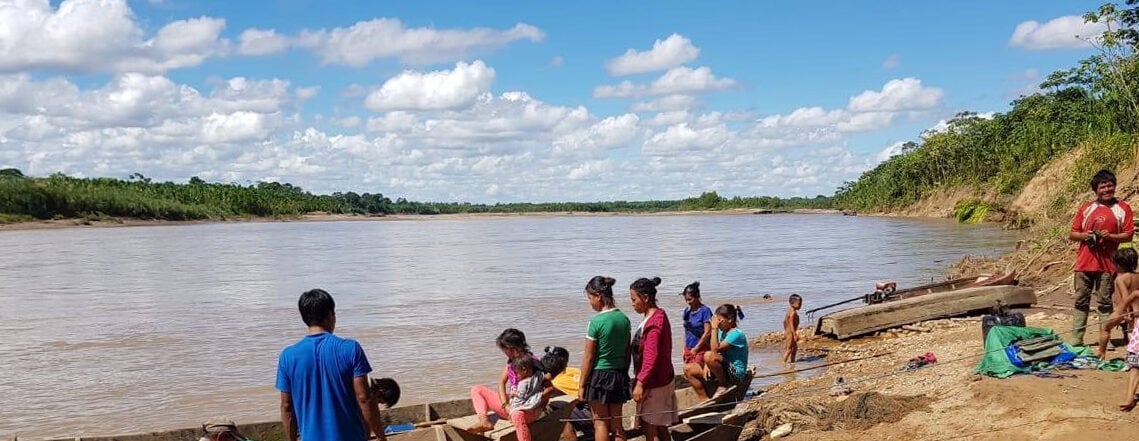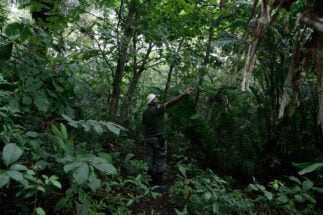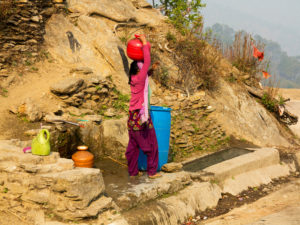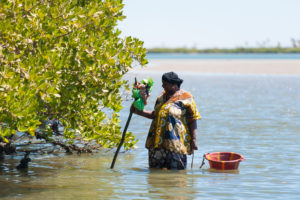In the extreme west of Bolivia’s Beni department, north of the capital La Paz, Amazonian forests survive in an increasingly degraded state. This remote area, which borders Peru and Brazil, used to be a veritable paradise before the arrival of the gold rush in the 1980s.
This corner of Bolivia is surrounded by protected areas. Yet, such a status has not prevented the arrival of economic activities that negatively impact rivers, forests and its population, especially gold mining. Indigenous communities are worst affected by forest loss and pollution owing to their high dependence on the natural environment. Now, their fears that mining will affect their livelihoods are becoming a reality.
Bolivia’s women hit by mercury pollution
A recent study on women’s exposure to mercury in Latin American gold-producing countries Brazil, Venezuela, Colombia and Bolivia by the International Pollutant Elimination Network (IPEN) and the Biodiversity Research Institute (BRI) found worryingly elevated levels of mercury in the population.
Although the research did not establish irrefutable proof of the cause, the high levels of mining activity in rivers near affected communities is unlikely to be a coincidence. Gold is found in soil and sediment. During the mining process mercury amalgamates with tiny gold particles, enabling its extraction but polluting the water. Fish then ingest it and indigenous populations who base their diet on the fruits of the river end up contaminated.
The researchers took hair samples from female volunteers of reproductive age in areas where there is small-scale mining activity. In Bolivia, they worked with women from two native Ese Ejja communities, an Amazonian ethnic group living in the forests surrounded by the Beni River.
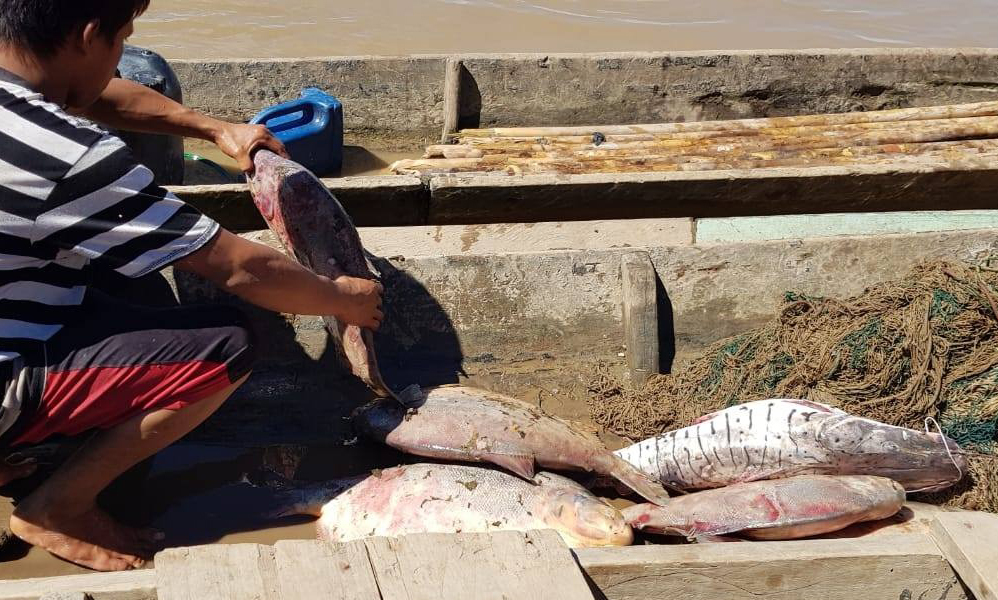
Miners in these regions extract low-grade gold particles.
These two communities on the banks of the Beni river, Eyiyo Quibo (north of La Paz) and Portachuelo (Pando department, bordering Beni) are more than 300 kilometres apart. Yet, they showed an “extremely high” quantity of the metal in their bodies. In fact, they have the highest levels detected since IPEN began its mercury biomonitoring programme in 2011.
Mercury affects the nervous system. We assume that the fish are contaminated. The data we have received is alarming and tells us that the entire Beni river basin is compromised
For Carmen Capriles of Reacción Climática, a civil society organisation that assisted with the work in Bolivia, there is a risk that future generations could also be affected.
“Mercury affects the nervous system. We assume that the fish are contaminated. The data we have received is alarming and tells us that the entire Beni river basin is compromised,” Capriles told Diálogo Chino.
IPEN’s research found that mercury poisoning in a mother can mean passing neurological disabilities, IQ loss, and damage to the kidneys and cardiovascular system to her unborn child.
Limbert Miquere Melchor, president of the Eyiyo Quibo Grassroots Territorial Organisation (OTB) in Rurrenabaque, a Beni municipality on the fringes of the Amazon rainforest and banks of the Beni river, says that two women in his community are “totally contaminated”. He puts it down to fish consumption.
Did you know?
The concentration of methylmercury in humans should not exceed one part per million (ppm) in the body. In these communities in Bolivia, out of 64 women sampled, 60 far exceeded this number.
According to the US Environmental Protection Agency, the concentration of methylmercury in humans should not exceed one part per million (ppm). In these communities in Bolivia, 60 out of 64 women sampled far exceeded that number. “One of the samples exceeded 180 ppm, which is too high for someone who is not involved in artisanal mining or in constant contact with mercury,” says Capriles, who stressed that further research is necessary to establish mining as the definite cause.
Ese Ejja: a fishing people par excellence
In his compendium of Bolivia’s indigenous ethnicities and eco-regions, anthropologist Álvaro Díez Astete argues that the Ese Ejja conceive of themselves in a direct relationship with Amazonian rivers. “Fishing is considered a daily cultural activity of the families (…), it is the fundamental basis of their diet”, he writes.
Based on the 2012 census and National Institute of Statistics (INE) figures, in 2015 there were around 1,687 people who self-identified as Ese Ejja in Bolivia.
It is precisely in the northern part of the basin of the 1178-kilometre Beni River where Chinese, Colombian and Bolivian dredgers practice open-pit gold mining.
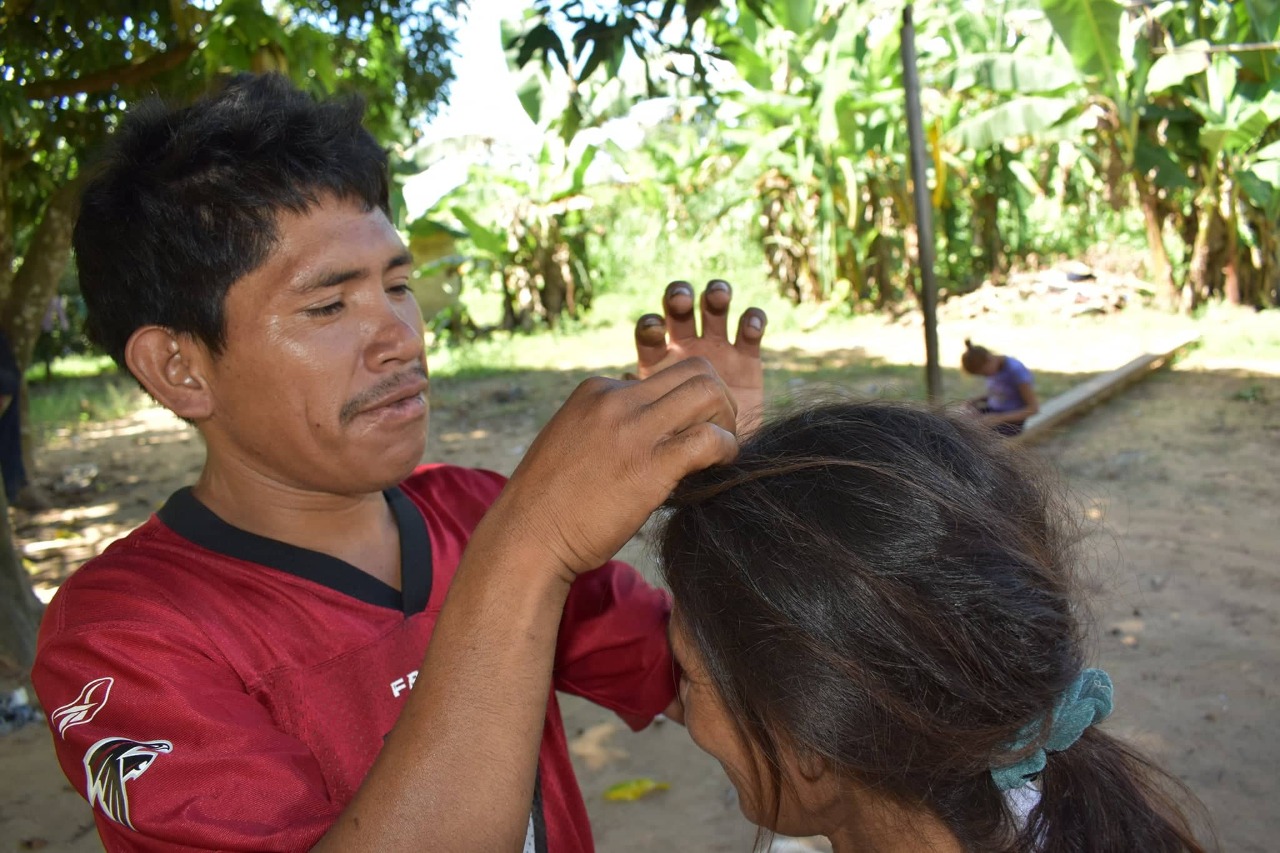
A study published in April last year by the Bolivian Documentation and Information Centre (Cedib) revealed that Bolivia is the second largest importer of mercury globally after India. It buys way more than artisanal and small-scale gold miners need. In 2015 alone, the country imported 152 tonnes, twelve times more than the previous year. The surplus is believed to be smuggled into Peru.
Valentín Luna, president of the association of communities along the Beni, Tuichi and Quiquibey rivers, counts at least 50 dredgers in the area.
Limbert Miquere agrees that there is pollution in the rivers. “For those of us who live in the communities, the main food is fish. It is almost 70 percent of our food. We catch fish, but the fish is already tasteless. If this continues further, it’s going to end our lives,” he told Diálogo Chino in a telephone interview.
Bolivia, mercury and the Minamata Convention
The 2017 Minamata Convention is the international treaty aimed at protecting human health from the adverse impacts of mercury. Bolivia ratified the convention through law 759.
In March 2020, the Ministry of Environment and Water met with UN representatives to discuss the need to coordinate a National Action Plan to comply with the Minamata Convention. A press release on the event remains one of the most recent government documents on mercury pollution in the country.
Article 7 of this treaty states that governments are obliged to take measures to reduce or eliminate the use of mercury and its compounds.
For Óscar Campanini, a researcher at Cedib, the state doesn’t comply with this. “It is established that the National Action Plan should be submitted three years after the entry into force of the Convention, and those three years were completed in August of last year.”
Furthermore, the IPEN investigation found that Bolivian state authorities knew in 2014 that in areas of Alto Beni and Bajo Madre de Dios there was “intense artisanal gold mining activity” and faced a “potential risk” or “intermediate vulnerability”.
Magín Herrera, Bolivia’s vice-minister of the Environment, Biodiversity, Climate Change and Forestry Management and Development, told Diálogo Chino that his office is working on a decree to reduce the environmental effects of mercury. The document is awaiting review by the office of the Directorate of Cooperatives within the Ministry of Mining.
Diálogo Chino requested a response from the Minister of Mining, Ramiro Villavicencio, through his communications unit, but received no reply by the time of publication.
Actions to be taken
Pando congressman Sergio Maniguary, of the Creemos alliance, believes that a “profound and exhaustive” investigation by academia and the state is necessary.
Maniguary said that even a close friend of his showed high levels of mercury in his body after undergoing a test. “He attributes this to the fact that he has been consuming fish from the area, he is from Riberalta (Beni),” he said.
The authors of the research are now calling for an outright ban on mercury use in Bolivia. “The results of this study make it clear that women and their children in the regions of the Latin American countries assessed are at significant risk unless the use of mercury is banned and the ban is enforced by the authorities.”
Campanini agrees. It should be done “as soon as possible”, he said.
